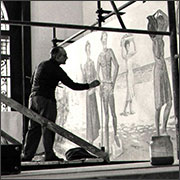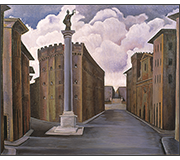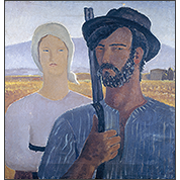|
|
|
Flavia Arlotta Colacicchi (1913-2010) Isabella Flavia Arlotta (who always used her second name, Flavia) was born in Naples on 9 May 1913. Her parents were Ugo Arlotta and Elena Albrecht von Brandenbourg and she spent a very happy childhood in Naples and Sorrento. Her father was cultivated and wealthy and her mother was Russian, born in Moscow and a sculptress. Their home was frequented by Italian and Russian artists and intellectuals. In 1930, at the age of seventeen, Flavia moved to Forence with her father in order to study painting. Through Felice Carena she soon met the young painter Giovanni Colacicchi who was to become her husband and with whom she had two children, Piero in 1937 and Francesco in 1942. In 1933 she spent a year in Munich and in Germany met the writer Lidia Pasternak, sister of Boris, who remained a close friend all her life. When Giovanni was in Cape Town in South Africa in 1935-36 Flavia studied with his great friend Onofrio Martinelli, an encounter which influenced certain technical aspects of her painting. Martinelli painted a portrait of Flavia in 1933. In 1935 Flavia received her diploma at the Accademia di Belle Arti when directed by Felice Carena. In the same year she painted The Hildebrand orchard at San Francesco di Paola (the painting is now in the Galleria d’Arte Moderna in Florence). This was the home of Clotilde Brewster Peploe who became a lifelong friend (her mother Elisabeth had been a friend of Giovanni’s in the 1920s). After the birth of Piero, Flavia and Giovanni went to live in Rome, where they shared a studio with Renato and Mimise Guttuso and where Flavia got to know Elsa Morante, a friendship which lasted many years and kept alive for long periods through the exchange of letters. In 1939 Flavia’s father, Ugo, purchased a villa and studio in Via dell’Osservatorio for Flavia and Giovanni. During the War in 1943 the family were forced to leave their house since it was very close to the railway and so in constant danger of being bombed. They went to live in Vallombrosa in a house lent to them by Bernard Berenson and Nicky Mariano. Flavia later described their life there (in “Ricordi” – a memoir published posthumously by Idea Books in 2013) where they gave shelter to the Martinelli (Adriana, the wife of Onofrio and the sister of Moravia, was Jewish) and others in danger, whether because they were Jewish or deserters from the Italian army or foreign soldiers escaping from German prisoner-of-war camps. In the sping of 1944, the family returned to Florence and lived in various temporary quarters before they were able to return to their home in Via dell’Osservatorio. Here they remained for the rest of their lives and each had a painting studio in the house. Since Giovanni’s health necessitated good sea air they would spend the winter months at Amalfi, Maratea, and later Gaeta and Massa, as well as Anagni. During these periods, far removed from the daily preoccupations of their lives in Florence, they both painted with renewed energy. Flavia always managed to find time for her art but was also deeply involved in various political and civic commitments. She helped artisans hit by the Arno flood in 1966 get back on their feet. In 1971 she was a founder member of “Firenze Viva”, an association for the protection of the historic and artistic heritage and landscape of Florence and its environs, when it was founded by Riccardo Gizdulich. She participated in the activities, also as a candidate, of the Green Party in Tuscany. She took part in various collective exhibitions: in Florence at Palazzo Strozzi (in 1933, 1934, 1941 and 1942) and in Rome at the Galleria d’Arte Moderna (the “Rassegna Nazionale di Arti Figurative” in 1948), and also exhibited in Naples and Milan. She had three solo exhibitions in Florence: two at the Gallery “Il Punto” (in 1979 and 1984) and one at the Lyceum (1998). Flavia died at her home in Via dell’Osservatorio on 13 December 2010, aged 97. After her death her papers (amongst which there are numerous letters from her life-long friends including Maria Chiappelli, Elsa Morante, Natalia Ginzburg, Annamaria Ortese) were deposited, together with those of Giovanni Colacicchi, with the Archivio Contemporaneo “A. Bonsanti” of the Gabinetto Vieusseux in Florence. 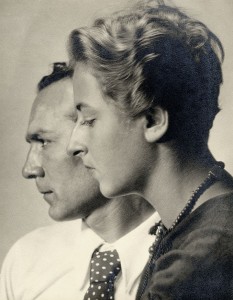 Giovanni and Flavia, 1934 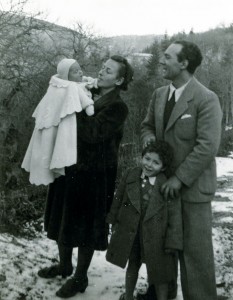 Flavia, Giovanni and family, at Vallombrosa during the War 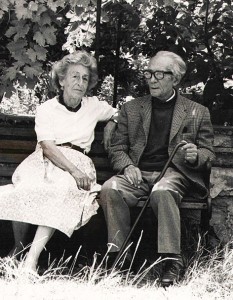 Flavia and Giovanni in their garden, 1992 |
Flavia Arlotta Gallery TopPost Devel

Flavia Arlotta was born in Naples into a cosmopolitan family on 9 May 1913. Her father Ugo was cultivated and wealthy and her mother was a Russian sculptress. In 1930 Flavia went to live in Florence to study painting. Through Felice Cerena she met Giovanni Colacicchi who later became her husband and with whom she had two sons: Piero in 1937 and Francesco in 1942. She received her diploma at the Accademia in 1935. She participated in various collective exhibitions in the 1930s and 1940s at Palazzo Strozzi in Florence and the Galleria d'arte Moderna in Rome. In 1939 her father bought her the studio house in Via dell'Osservatorio which remained the well-loved residence of Flavia and Giovanni for the rest of their lives.
The War years were passed with the family in Vallombrosa in the house loaned to them by Nicky Mariano and Bernard Berenson. That period was described by her in her memoirs "Ricordi", published posthumously in 1913. She painted portraits, still lifes, and landscapes and had three solo exhibitions in Florence in 1979, 1984 and 1998. Besides her art Flavia also dedicated her life to the conservation of Florence and its environs. Her papers, together with those of Giovanni Colacicchi, are deposited with the Archivio Contemporaneo "A. Bonsanti" of the Gabinetto Vieusseux of Florence.
She died in Florence on 13 December 2010 in her house in Via dell'Osservatorio.

